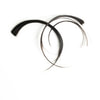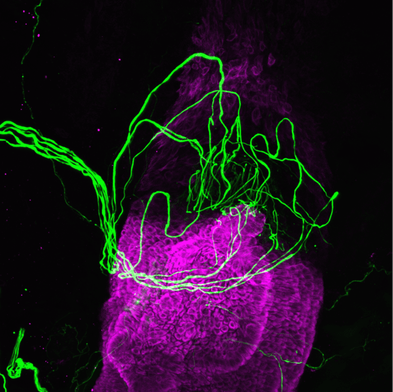|
In the fiercely competitive world of career advancement, success often hinges on meticulous attention to detail. From honing your skills and qualifications to perfecting your attire and grooming, every element contributes to your professional journey. One often underestimated factor that can profoundly impact a man's career prospects is hair. Yes, you read that correctly! In this article, we'll delve into the intriguing ways in which hair can be a game-changer, from bolstering self-confidence to leaving a lasting impression. Let's explore the intricate relationship between your locks and your path to professional success. THE ROLE OF HAIR IN BOOSTING CONFIDENCE Your hair can be a powerful confidence booster, a vital attribute when aiming for career growth. The saying, "When you look good, you feel good," holds true, as well-groomed hair enhances your overall appearance and self-image. This boost in self-esteem encourages you to stand taller, maintain eye contact, and exude confidence in your interactions with others. Positive feedback about your hair, whether from friends, colleagues, or strangers, provides social validation. Compliments and admiration reinforce your self-confidence, creating a positive feedback loop that encourages assertive behaviour and facilitates success in various professional settings. Additionally, people often associate well-groomed individuals with competence and reliability, further enhancing your confidence in the workplace. THE SIGNIFICANCE OF HAIR IN MAKING FIRST IMPRESSIONS Your hair is a pivotal component of your professional image, often being one of the first things people notice about you. A polished, well-maintained hairstyle communicates discipline and professionalism, making it imperative that your hair sends the right message, particularly during job interviews or client meetings. Moreover, your hairstyle can work wonders in concealing your age, a valuable asset in the workplace where a youthful appearance is often linked to energy and adaptability. With the right haircut and grooming routine, you can maintain a fresh and youthful look, potentially gaining a competitive edge over your peers. UNDERSTANDING HAIR LOSS IN YOUR 30S AND 40S For many men in the prime of their career in their 40s, they usually start to notice their hair loss becomes more pronounced, typically following the pattern established in their 30s. Male pattern baldness, also known as androgenetic alopecia, is the primary culprit. Here are key insights into hair loss in your 30s and 40s: - Pattern of Hair Loss: Male pattern baldness often manifests as a receding hairline and thinning at the crown of the head, with hair loss progressing gradually over time. - Genetic Predisposition: Genetics plays a significant role in this condition, and a family history of hair loss can increase your likelihood of experiencing it. - Hormonal Changes: Hormones, especially dihydrotestosterone (DHT), contribute to hair loss by causing hair follicles to shrink over time. Hormonal changes that come with age can exacerbate this process. - Slower Rate of Growth: As men age, their hair growth rate typically slows down, resulting in finer and less dense hair, contributing to the appearance of thinning. - Lifestyle Factors: Stress and certain lifestyle choices, such as smoking, excessive alcohol consumption, and poor nutrition, can exacerbate hair loss. Adopting a healthier lifestyle can mitigate these effects. - Medical Interventions: Treatments like minoxidil (topical) and finasteride (oral) are FDA-approved options that can slow down hair loss and promote regrowth in some cases. Hair transplant procedures offer a more permanent solution for those seeking restoration. - Scalp Care: Proper scalp care, including regular shampooing, using a gentle conditioner, and avoiding harsh styling practices, is essential for preserving existing hair. - Consultation with a Hair Transplant Doctor: If hair loss concerns you in your 30s and 40s, consulting hair transplant doctor is advisable. They can assess your condition, provide a diagnosis, and recommend suitable treatments or provide further research materials including videos, podcasts and blogs. - Managing Expectations: It's crucial to maintain realistic expectations when addressing hair loss. While treatments can slow down the process and promote regrowth to some extent, they may not completely reverse the effects of male pattern baldness. FROM MANAGER TO LEADER: THE IMPACT OF HAIR ON LEADERSHIP As you ascend the corporate ladder, leadership skills become paramount. Interestingly, your hair can also reflect your readiness for a leadership role. A well-maintained, authoritative hairstyle exudes a sense of control and command, fostering trust and making it easier for others to follow your lead. Here are some of the best hairstyles to exude confidence and authority in the corporate setting: - Classic Tapered Cut: The classic tapered cut is a timeless and professional choice. It's short on the sides and back, gradually tapering in length as it moves up the head. This style is clean, neat, and exudes a sense of discipline and attention to detail. - Short Side Part: A short side part is a refined and sophisticated look. It involves slightly longer hair on top, combed to one side with a distinct part. This style is a favorite among executives and conveys a polished appearance. - Slicked-Back Style: The slicked-back style features hair combed back and held in place with a product like pomade or gel. It offers a sleek and organized appearance that can exude confidence and authority. - Textured Quiff: The textured quiff features longer hair on top that's styled upward and slightly back. It adds an element of stylish sophistication to your appearance while maintaining a professional edge. - Professional Pompadour: A professional pompadour combines a sleek, swept-back look with volume on top. It's a refined style that can exude confidence and authority without being overly flashy. Remember that the best hairstyle for projecting confidence and authority in the boardroom depends on your individual style, hair type, and personal preferences. Regardless of the style you choose, it's essential to keep your hair well-groomed, maintain regular trims, and use appropriate styling products to achieve the desired look. CONCLUSION Your hair is far more than just a collection of strands on your head; it's a critical component of your professional image that can significantly shape your career journey. From boosting self-confidence to making an indelible impression, your hairstyle is a powerful tool for career advancement. By paying careful attention to your hair and grooming routine, you can enhance your professional image, radiate confidence, and ultimately unlock the doors to success in your professional pursuits. So, don't underestimate the potential of your locks; they might just be the secret weapon you've been seeking on your path to professional achievement. Written by Menswear Style
Clinical Relevance: Hair has feelings too
Even hair follicles want to ‘stay in touch’ with their roots. Research just published in Science Advances suggests that the structures that anchor individual strands of hair in place are capable of a sensory experience that was previously unknown to science. Beyond making sure that hair stays put, hair follicles also help regulate temperature and manage sweat. While humans don’t use whiskers to feel around the same way animals like cats and dogs do, our sense of touch is advanced enough to assist us in navigating the world and even process emotions. THE MANE RESULTS It works like this: special nerve cells in the skin send touch information to the brain. So do other skin cells. In the new study, Imperial College London explored the interaction between these nerve cells and human hair follicles to see what and how they experienced touch. The researchers started by collecting scalp skin samples from men aged 23 to 54 who were undergoing hair transplant surgeries and also gathering up leftover skin from abdominoplasties to establish keratinocyte cultures. A keratinocyte is a skin cell that produces keratin, the protein that makes up the outer layer of skin, hair, and nails. The researchers then processed the samples using various techniques. They used whole-mount immunolabeling to highlight specific tissue parts for microscopic viewing. Volumetric imaging captured detailed 3D tissue pictures. They also analyzed RNA extractions for gene expression. Additionally, they cultured different cell types and subjected them to a variety of treatments to observe the responses. This complex set of experimental methods helped demonstrate how the nerve cells sent signals to the brain that process touch sensitivity. Cells known as outer root sheath, or ORS, cells in the hair follicles interacted with these nerve cells. When something pressed against or moved the ORS cells, they released chemicals like serotonin and histamines to help modulate the response of the nerve cells. “This is a surprising finding as we don’t yet know why hair follicle cells have this role in processing light touch,” said lead author Claire Higgins, a professor at the Imperial College London’s department of bioengineering. “Since the follicle contains many sensory nerve endings, we now want to determine if the hair follicle is activating specific types of sensory nerves for an unknown but unique mechanism.” EVEN MORE IN TOUCH Further testing showed just how sensitive the ORS cells were. The number of times something touched the hair follicle influenced the amount of serotonin and histamine released. More frequent brushups led to a greater chemical release. Compared to how skin cells react to contact, the researchers noted that while both types of cells respond to touch by releasing histamine, only the ORS cells released serotonin. This implies that hair follicles have a unique way of sensing and responding to touch compared to the rest of the skin. Interestingly, the researchers observed that ORS cells also had the ability to revert into regular skin cells when needed, like during wound healing, but still maintained their unique touch-sensing abilities. Previous research on ORS cells found that they emit ATP (Adenosine Triphosphate), a molecule that serves as a signaling agent to communicate with nerve cells. The new findings add complexity to this model by showing that the communication between ORS cells and nerve cells isn’t just a one-way street with ATP as the only traffic light. There might be other molecules or mechanisms involved, making the process more intricate than originally observed. SKIN DEEP SCIENCE These insights into the touchy feely powers of hair follicles could potentially lead to new treatments for conditions related to touch sensitivity or insensitivity. They might have implications for treating other types of skin problems as well. “This is interesting as histamine in the skin contributes to inflammatory skin conditions such as eczema, and it has always been presumed that immune cells release all the histamine. Our work uncovers a new role for skin cells in the release of histamine, with potential applications for eczema research,” Higgins said. The researchers say they need to conduct further experiments on living organisms to validate the study’s results. Since some nerve receptors exist only in hairy skin, the team will explore specialized signaling mechanisms within the hair follicle for these nerves. from Psychiatrist.com
|
Hair by BrianMy name is Brian and I help people confidently take on the world. CategoriesAll Advice Announcement Awards Balayage Barbering Beach Waves Beauty News Book Now Brazilian Treatment Clients Cool Facts COVID 19 Health COVID 19 Update Curlies EGift Card Films Follically Challenged Gossip Grooming Hair Care Haircolor Haircut Hair Facts Hair History Hair Loss Hair Styling Hair Tips Hair Tools Health Health And Safety Healthy Hair Highlights Holidays Humor Mens Hair Men's Long Hair Newsletter Ombre Policies Procedures Press Release Previous Blog Privacy Policy Product Knowledge Product Reviews Promotions Read Your Labels Recommendations Reviews Scalp Health Science Services Smoothing Treatments Social Media Summer Hair Tips Textured Hair Thinning Hair Travel Tips Trending Wellness Womens Hair Archives
May 2025
|
|
Hey...
Your Mom Called! Book today! |
Sunday: 11am-5pm
Monday: 11am-6pm Tuesday: 10am - 6pm Wednesday: 10am - 6pm Thursday: By Appointment Friday: By Appointment Saturday: By Appointment |








 RSS Feed
RSS Feed